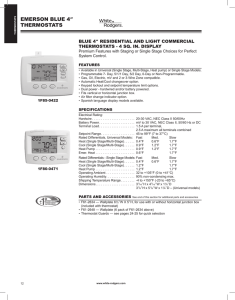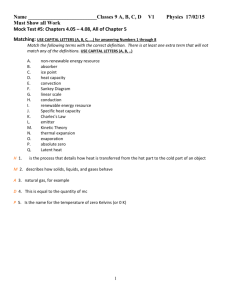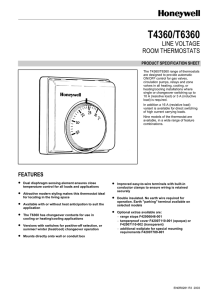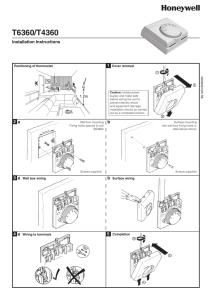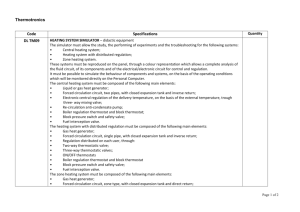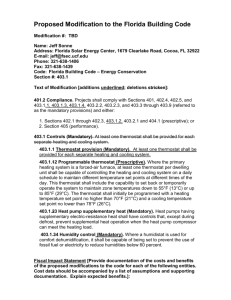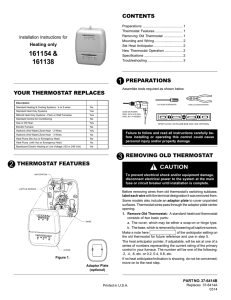Presentation 11 Thermostats
advertisement
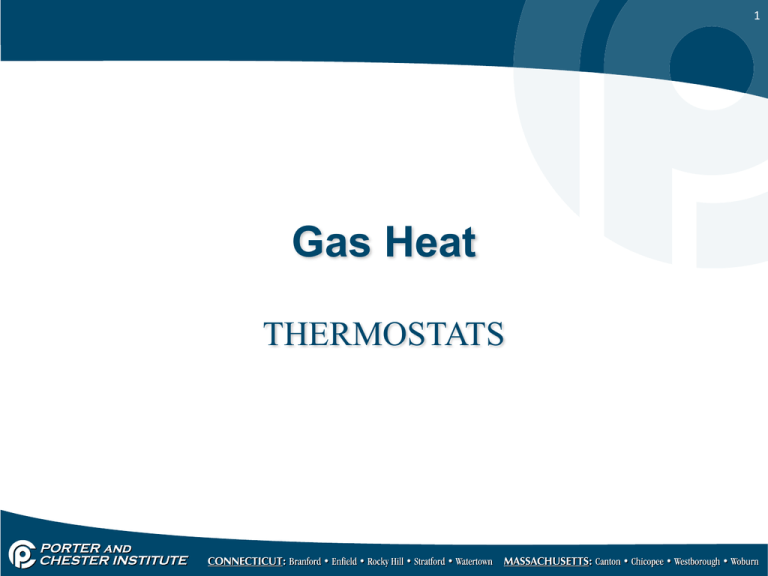
1 Gas Heat THERMOSTATS 2 Thermostat • A thermostat is a control that is activated by changes in the surrounding air temp. 3 Mercury thermostat • Has mercury inside which is considered a hazardous material which. • Mercury was used because it stays liquid at room temperature. • Not as sensitive as a programmable. • Has a heat anticipator. • Can only set 1 temperature at a time. 4 Mercury Bulb Thermostat 5 Snap Action Thermostat No mercury. Inexpensive. Accurate, but not as sensitive as a digital thermostat. Has a heat anticipator. Can only set 1 temperature at a time. 6 Snap Action Thermostat 7 Digital Thermostats • No mercury inside. • Operated by a circuit board and sensor. • More sensitive to temperature change- up to ½ a degree. • Depending on the brand and model of t-stat being installed, you can set more then 1 temperature. 8 Common wiring terminals on all basic thermostats • • • • • RC = 24v power for cooling RH = 24v power for heating Y = cool W= heat G = blower 9 Common wiring terminals on all higher end thermostats • • • • • • • • RC/RH= power (24v) Y1= stage 1 cool Y2= stage 2 cool W1= stage 1 heat W2= stage 2 heat G=fan O= reversing valve ( found on heat pumps) C= common 10 Common wire colors used for wiring components • • • • • • • • RC/RH = Power (24v) = red G = Fan= green Y1 = stage 1 cool= yellow Y2= stage 2 cool= blue W1= stage 1 heat= white W2= stage 2 heat= brown O- reversing valve= orange C = Common= black 11 Heat anticipator • A device that will shut down the heating circuit, prematurely of the set point, so the system does not over shoot the setpoint temperature. • The set-point is the temperature the thermostat is set too. 12 Setting a heat anticipator • Take your meter to the t-stat and set it to amps. – – – – Jump out your heating circuit (R and W) Wrap your jumper around your amp probe 10 times Read your meter and divide by 10 This is your heat anticipator set-point • Sometimes this information can be written on unit information sticker. 13 14 Symbols 15


